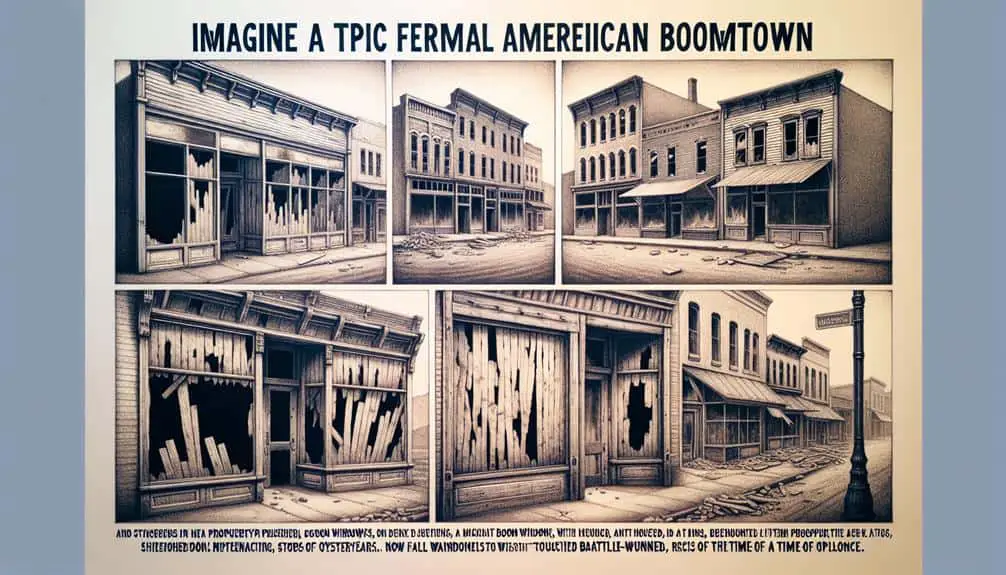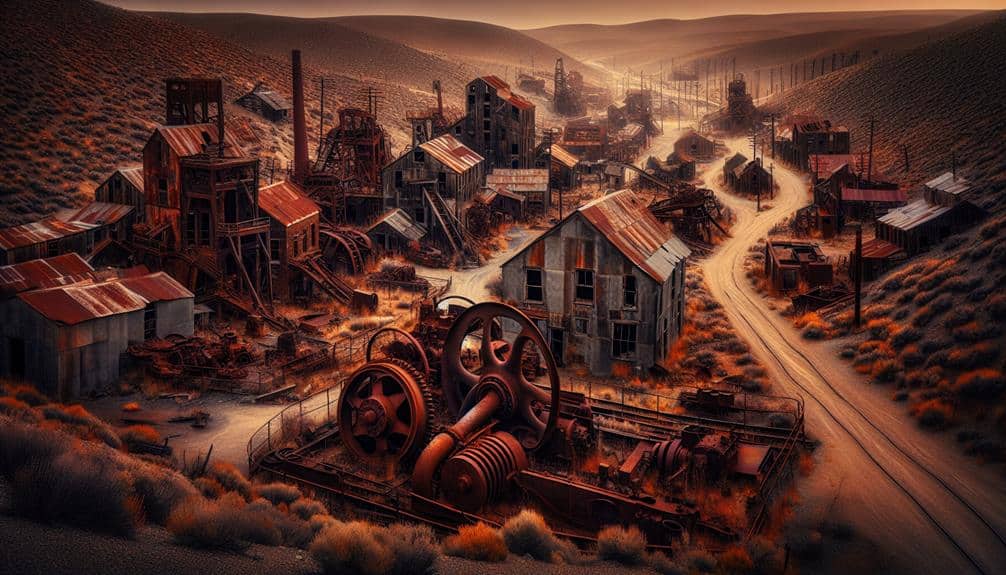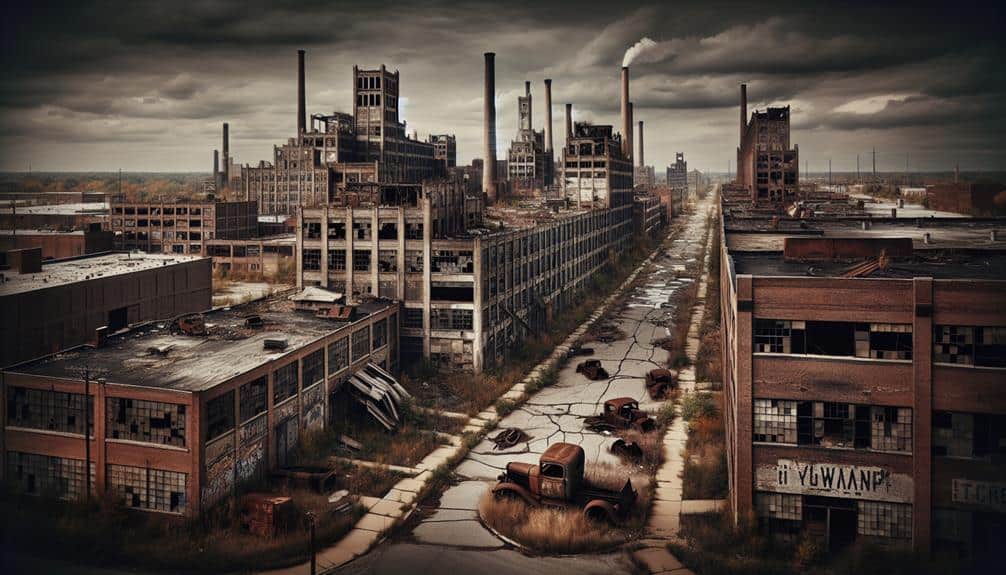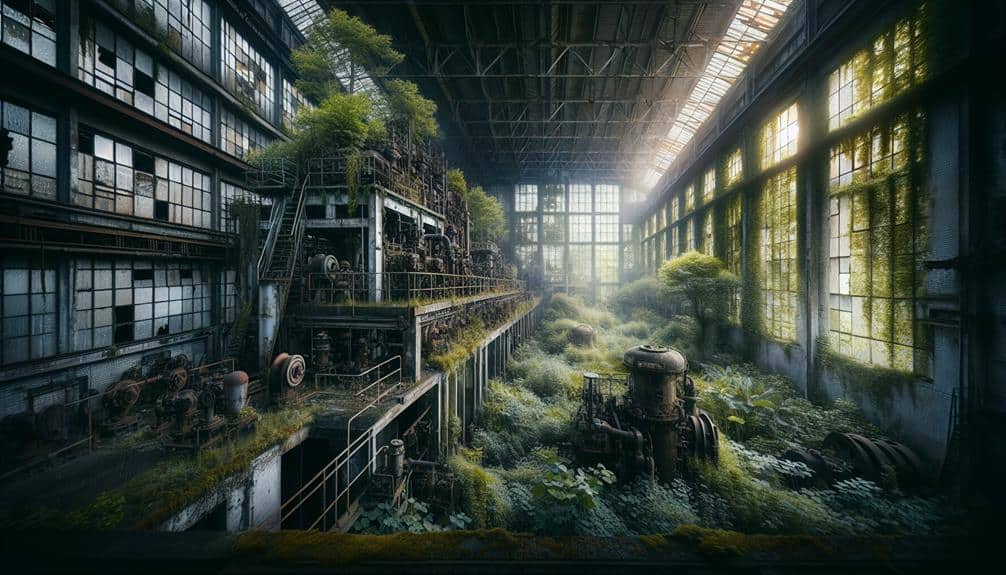Former US boomtowns like Pittsburgh, Detroit, and Cleveland thrived due to industrial revolution advancements and population influx. However, economic shifts and globalization caused a decline in their dominance. Population exodus, job losses, and neglected infrastructure accelerated the downturn. Abandoned structures symbolize past glory amidst urban decay. Preservation efforts honor heritage and ignite revitalization, attracting tourism and investments. The revitalization journey requires sustainable growth, community engagement, and urban renewal initiatives to transform these areas into modern spaces. Uncovering unique stories and preserving cultural legacy are key. Explore the transformation of these once-powerful cities.
Key Points
- Economic shifts and job losses led to population decline and urban decay.
- Abandoned structures serve as reminders of former industrial glories and neglect.
- Historical preservation efforts honor the cultural heritage of former boomtowns.
- Revitalization initiatives focus on sustainable growth and community engagement.
- Future prospects rely on continued commitment to urban renewal and economic revitalization.
Rise and Fall of Industrial Powerhouses
During the 19th and early 20th centuries, industrial powerhouses across the United States rose to prominence due to the Industrial Revolution, which brought about significant advancements in manufacturing and technology. Cities flourished as urban migration swelled the populations, driving economic growth and prosperity. Places like Pittsburgh, Detroit, and Cleveland became synonymous with industry, attracting workers from rural areas in search of employment opportunities.
The Industrial Revolution propelled these boomtowns into economic success, with factories churning out goods and spurring infrastructure development. As the urban population grew, so did the demand for labor, leading to a cycle of expansion and prosperity.
However, the latter half of the 20th century brought challenges to these industrial powerhouses. Economic shifts, technological advancements, and globalization began to chip away at their dominance, causing many to face a decline in industries that were once their lifeblood. The rise and fall of these industrial giants reflect the dynamic nature of economies and the need for adaptability in the face of change.
Economic Shifts and Population Decline
The economic shifts and population decline in former US boomtowns signal a significant transformation in their once thriving industrial landscapes. As industries evolved and populations shifted, these areas faced challenges that reshaped their socioeconomic dynamics.
Here's a closer look at the current situation:
- Population Trends: The mass exodus of residents from these areas has led to shrinking populations, impacting local economies and community structures.
- Economic Changes: Industries that once fueled these boomtowns have either declined or moved to more urbanized regions, leaving behind vacant factories and job losses.
- Shift in Demographics: The demographic composition of these areas has altered, with younger generations seeking opportunities elsewhere, leading to an aging population.
- Struggling Infrastructure: Declining populations have strained local infrastructure, with services such as schools, hospitals, and transportation networks facing challenges due to reduced funding and demand.
These factors intertwine to paint a complex picture of the challenges faced by former US boomtowns in adapting to the changing economic and population landscapes.
Abandoned Structures and Urban Decay
Amidst the economic downturn and shifting demographics, the landscape of former US boomtowns is now characterized by abandoned structures and urban decay. Urban exploration and architectural photography have gained popularity as individuals venture into these decaying spaces, capturing the haunting beauty of neglect. These abandoned buildings, once symbols of prosperity, now stand as reminders of the past glories that have faded away.
While some may see these structures as eyesores, others advocate for historical preservation and community involvement. Efforts to restore and repurpose these buildings not only breathe new life into the areas but also honor the rich history embedded within their walls. Community initiatives aimed at revitalizing these spaces not only create opportunities for economic growth but also foster a sense of pride and belonging among residents.
As you navigate through the remnants of these former boomtowns, you witness the juxtaposition of decay and hope, where the echoes of the past mingle with visions of a reimagined future.
Legacy of Former Boomtowns
The heritage of former US boomtowns manifests both economically and culturally, reflecting the enduring impact of their once-prosperous eras. These towns, once bustling with economic activity and cultural vibrancy, now stand as evidence to a bygone era, each holding a unique story waiting to be uncovered.
- Cultural Heritage: The rich history of former boomtowns is preserved through local museums, historical sites, and community events that celebrate the traditions and achievements of the past.
- Historical Preservation: Efforts are made to maintain the architectural integrity of old buildings, ensuring that the unique character of these towns isn't lost to time.
- Community Resilience: Despite economic downturns, residents of former boomtowns often exhibit a strong sense of community spirit, working together to preserve their town's heritage and improve quality of life.
- Tourism Potential: Many former boomtowns capitalize on their historical significance to attract tourists, offering guided tours, heritage trails, and cultural experiences that generate revenue and interest in the area.
Revitalization Efforts and Future Prospects
With an eye on sustainable growth and community development, revitalization efforts in former US boomtowns are strategically leveraging their historical legacies to chart a path toward a vibrant future. Urban renewal initiatives are at the forefront of these revitalization strategies, aiming to transform once-thriving industrial centers into modern, livable spaces. Community engagement plays a pivotal role in this process, as empowering residents to participate in decision-making fosters a sense of ownership and pride in the rejuvenation efforts.
By capitalizing on their unique heritage and architectural assets, former boomtowns are attracting investments that spur economic revitalization. For instance, repurposing historic buildings into mixed-use spaces can breathe new life into downtown areas, creating opportunities for businesses to flourish and residents to enjoy a diverse array of amenities.
Looking ahead, the future prospects of these revitalized boomtowns hinge on sustained commitment to urban renewal and ongoing community engagement. By fostering a sense of belonging and inclusivity, these once-declining cities have the potential to evolve into thriving hubs of innovation and culture, showcasing the transformative power of revitalization efforts.
Frequently Asked Questions
What Were the Main Industries That Led to the Initial Boom in These Former US Boomtowns?
Like a phoenix rising from the ashes, industries such as mining, logging, and railroads fueled the initial boom in former US boomtowns. Economic shifts led to their decline, but revitalization efforts offer promising future prospects.
How Did the Economic Shifts in the Global Market Contribute to the Decline of These Industrial Powerhouses?
In the global economy, workforce shifts due to technological advancements and outsourcing played a significant role in the decline of industrial powerhouses. Environmental impact and urban decay further exacerbated the situation, leading to a downward spiral.
What Are Some Examples of Notable Abandoned Structures in These Former Boomtowns and What Is Their Current State?
Explore notable abandoned structures in former boomtowns. Discover their current state amidst economic shifts. Learn about ongoing revitalization efforts. Witness the intersection of past glory and present struggle in these silent declarations.
How Have the Former Boomtowns Preserved Their Legacies and Historical Significance?
Preservation efforts in former boomtowns have boosted tourism development. Cultural heritage is key. Community engagement drives restoration projects. Did you know that over 70% of historic sites have been saved from decay?
What Specific Revitalization Efforts Have Been Successful in Turning Around the Fortunes of These Declining Towns and What Are the Future Prospects for Their Economic Growth?
To boost economic growth prospects in declining towns, successful revitalization efforts focus on infrastructure upgrades, attracting new industries, and fostering entrepreneurship. By fostering a business-friendly environment, these towns can thrive and create sustainable futures.



